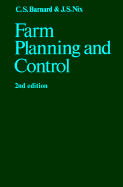Book contents
- Frontmatter
- Contents
- Notice to readers
- Preface to the first edition
- Preface to the second edition
- Selected metric conversion factors
- Part I The organisation of resources
- Part II The organisation of enterprises
- Part III The combination of enterprises
- 13 Principles and procedures in planning enterprise combination
- 14 Budgeting and programme planning
- 15 Linear programming
- 16 Uncertainty and farm organisation and planning
- 17 Further programming techniques
- 18 Matrix construction
- Part IV The control of resources and enterprises
- Selected further reading
- Index
15 - Linear programming
Published online by Cambridge University Press: 01 June 2011
- Frontmatter
- Contents
- Notice to readers
- Preface to the first edition
- Preface to the second edition
- Selected metric conversion factors
- Part I The organisation of resources
- Part II The organisation of enterprises
- Part III The combination of enterprises
- 13 Principles and procedures in planning enterprise combination
- 14 Budgeting and programme planning
- 15 Linear programming
- 16 Uncertainty and farm organisation and planning
- 17 Further programming techniques
- 18 Matrix construction
- Part IV The control of resources and enterprises
- Selected further reading
- Index
Summary
Linear programming is a technique based on the processes of matrix algebra, which given suitably formulated data, is capable of producing optimal, mathematical solutions in terms either of maximising or of minimising some stated objective. It thus lends itself readily in farm planning to the determination of the combination of enterprises and techniques that maximises the returns to a particular set of fixed resources. Similarly, though less commonly so as a direct farming application, it can be used to discover the least-cost way of producing a stated output, as in the computation of minimum-cost rations.
For all practical purposes, linear programming requires access to a computer, for although computations can be performed by hand they become very time-consuming and there is a considerable risk of cumulative errors arising. Two basic sets of input data are required to solve a problem by computer. One concerns the problem itself – thus falling within the province of the planner – and is contained in a ‘matrix’ or two-way table. The other – the program–consists of instructions about the manipulations to be performed on the matrix. The latter is the responsibility of the specialist and is, in any case, a once-and-for-all task that need not concern the computer user, except insofar as it affects the way in which the planning data must be presented to the computer and the form in which the computer output – the solution to the problem – is obtained.
- Type
- Chapter
- Information
- Farm Planning and Control , pp. 353 - 381Publisher: Cambridge University PressPrint publication year: 1980



